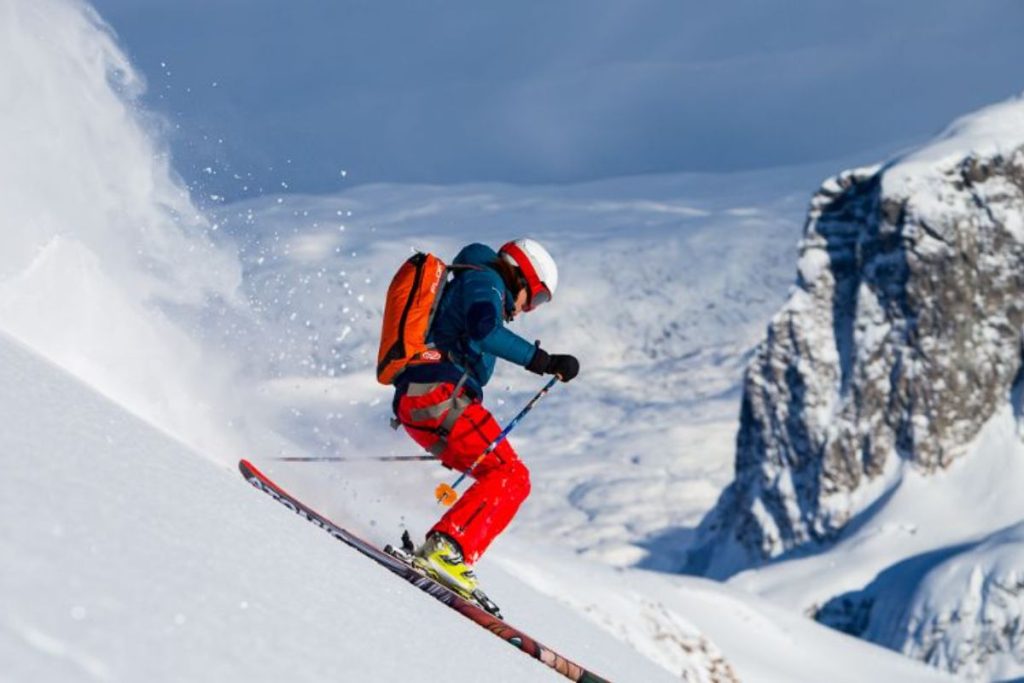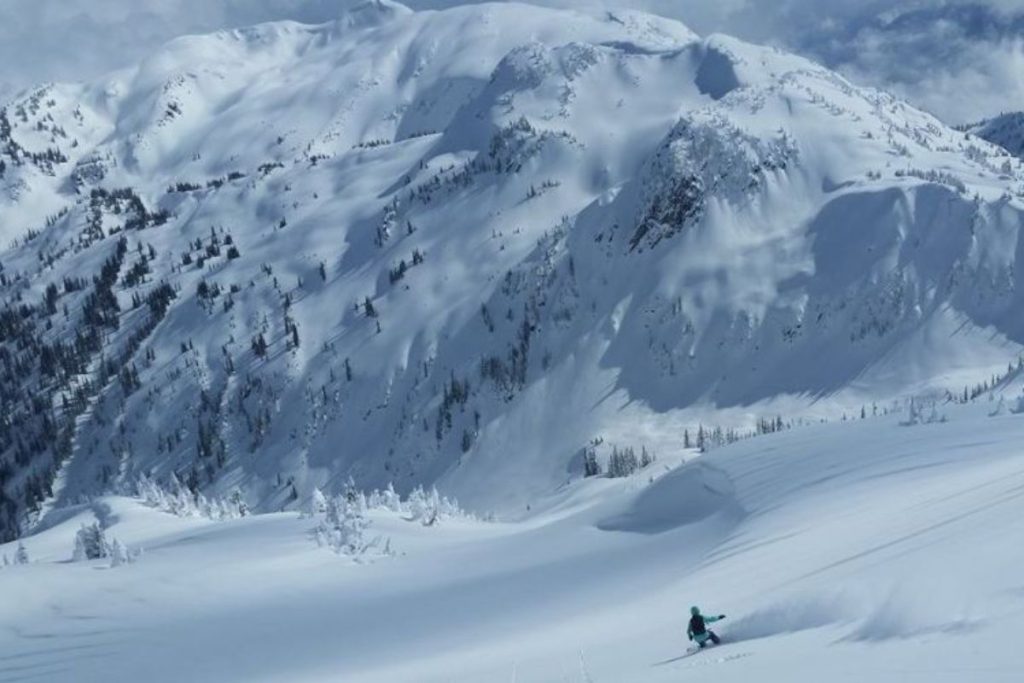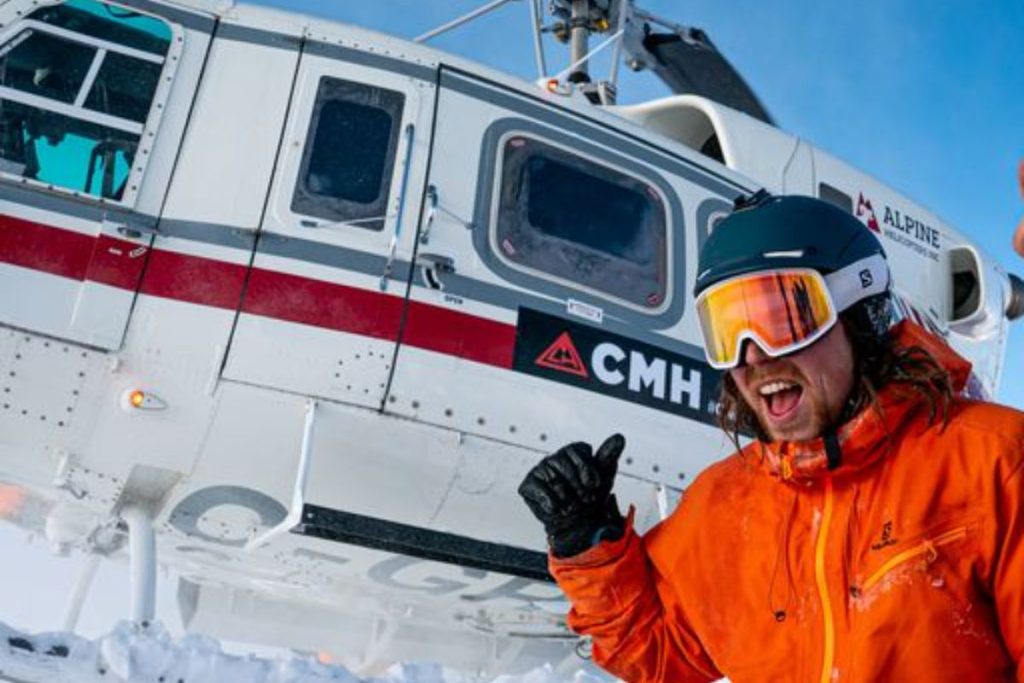For those who have yet to embark on one of these incredible adventures, you may have a few questions about helicopter skiing. In this brief guide, we will cover some frequently asked questions we have come across, including how helicopter skiing works, how safe it is, if avalanche safety training is necessary, whether there are any special requirements, and much more.
At Pure Powder, a part of our mission is to demystify our beloved sport and set the record straight on a few of the misconceptions surrounding it. Most people understand the nature of traditional skiing, but helicopter skiing is still something that many people are largely unfamiliar with – we seek to change this. If you have been looking for some general information about heli-skiing, you are certainly in the right place.
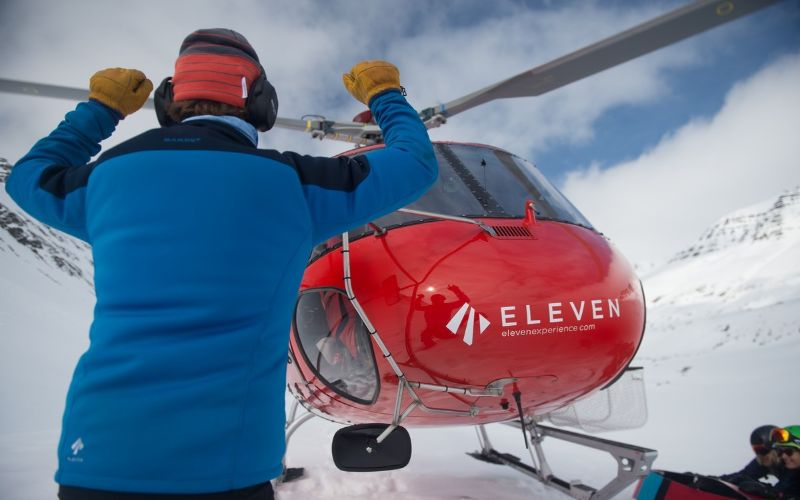
How Does Helicopter Skiing Differ From Traditional Skiing?
The name “Helicopter Skiing” gives away quite a lot of what you need to know about this form of skiing. Instead of utilising lifts or hiking on foot, as you would in traditional skiing, you are transported to the top of the slope, peak, or remote location by helicopter. This makes a world of difference to the skiing experience as a whole, as you are able to reach remote, untouched locations that would otherwise be impossible to access through regular means.
Traditional skiing generally takes place on groomed resort slopes, or in backcountry and off-piste locations – these slopes are often used by many individuals, and it is unlikely that you will be completely alone. Alternatively, when heli-skiing, the likelihood of bumping into anyone else is extremely low, and this allows for run after run through pristine, untouched powder, without needing to worry about resort crowds.
Another major difference is the amount of skiing you are able to do – when helicopter skiing, the chopper does the majority of the heavy lifting, and without needing to travel on foot, you are able to turn your full attention to the sheer enjoyment of skiing in the wilderness. These factors, when paired with the breathtaking views you have while flying, make these trips a truly unique and thrilling adventure that all ski enthusiasts should try at some point.
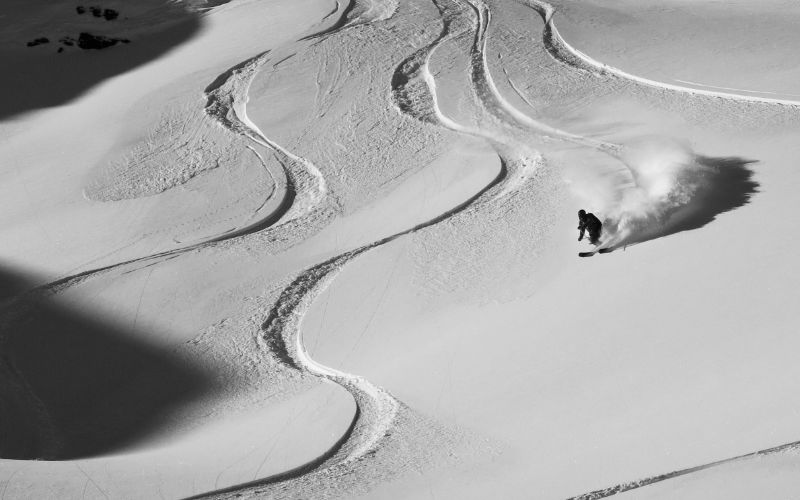
Do I Need Avalanche Training To Head Out On A Helicopter Skiing Trip?
While it can never hurt to be better informed about avalanche safety, you do not need any avalanche training to go heli-skiing. When you choose Pure Powder, you can rest assured that your safety and well-being are at the top of our list of priorities. While we may not physically be with you throughout the adventure, we have hand-picked the best ski operators in the world to look after our clients, and this goes hand in hand with the best possible guides.
Your guides will run you through basic avalanche safety and, depending on the operator, they may give you a few pieces of safety equipment should any issues arise. However, at the end of the day, your guides and the ski operators themselves are extremely well-versed in avalanche safety, and they have an excellent understanding of warning signs and terrain that should be avoided. They will take all necessary precautions to ensure that your adventure goes as smoothly as possible.
What Is The Best Time Of Year To Go Helicopter Skiing?
The answer to this question will depend on the location you have decided on, as ski seasons differ across the world. In the Northern Hemisphere, the ski season usually runs from December until March or April, with the mid-winter months of January and February considered peak season.
In Europe and North America, it is during these months that you are most likely to encounter deep, powdery snow. If you are looking for a very particular type of weather or snow condition, this can also have an impact on when you start your trip.
Whatever the case, at Pure Powder, all you need to do is let us know what sort of experience and conditions you would prefer, and we will match you with the ideal location in line with your specific preferences. We help individuals fulfil their heli-skiing dreams all over the world, from Japan to Chile, Canada, Turkey, and more, and chances are that one of these locations matches the conditions you are searching for!
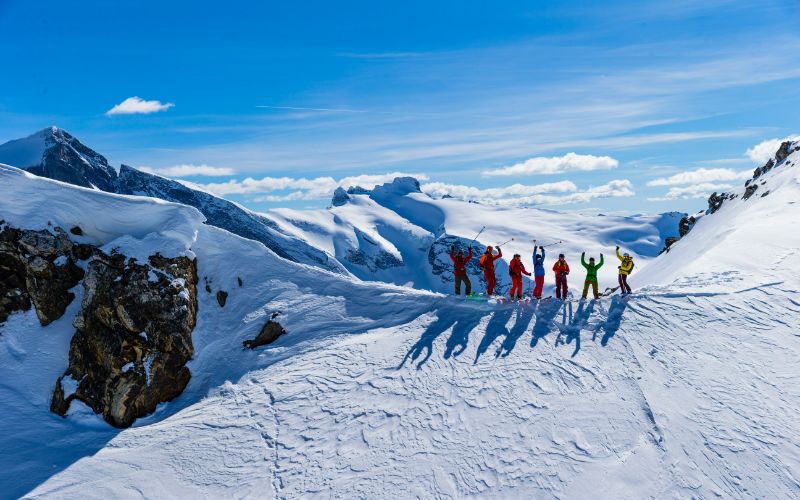
How Safe Is Heli-Skiing?
Heli-skiing safety has come a long way since it became popularised in the 1970s, and when you go through reputable operators who make safety a priority, as we do, the risks are greatly reduced. With that being said, there are inherent risks involved in any form of skiing, whether it be resort, off-piste, or helicopter skiing, but these can be effectively mitigated by the presence of well-trained and experienced guides.
In some ways, heli-skiing is safer than skiing off-piste in a resort, as there are far fewer, if any, skiers on the backcountry slopes. This is relevant because one of the main causes of injury when resort skiing is accidental collisions – this is a non-issue when helicopter skiing. Another common concern is avalanches, but the risks can be effectively reduced by carrying out comprehensive snowpack assessments, making use of safety equipment, like shovels, beacons, and probes, and, as we mentioned earlier, providing customers with basic avalanche safety training and reliable guides.
Lastly, we will talk about the safety of the helicopter itself. Backcountry flying only really becomes dangerous when operators are not proactive about maintaining and servicing their helicopters, which can result in mechanical issues or failure. However, well-regarded ski operators take zero risks in this regard, constantly ensuring that their machines are in perfect condition. Additionally, the pilots are second to none, having an unparalleled knowledge of the terrain, weather conditions, and general flight safety.
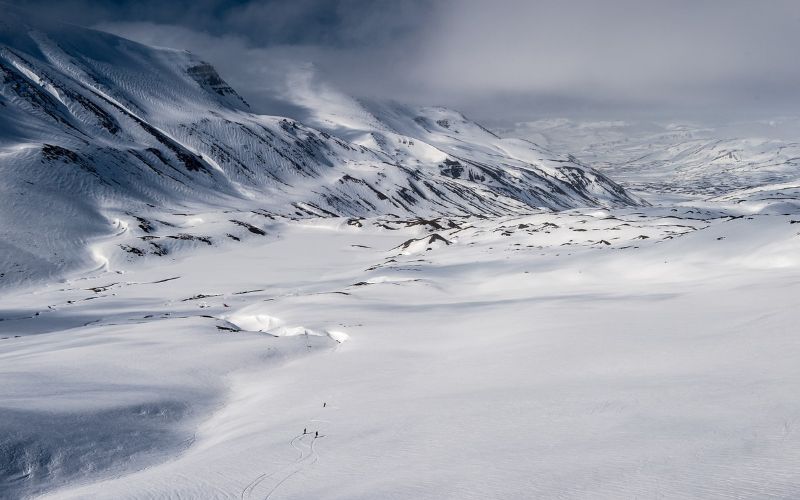
How Much Does Helicopter Skiing Cost?
As you can imagine, many variables are factored into the overall cost of a specific heli-skiing adventure. We also have a range of trips to choose from, including our signature heli-skiing, small group, private, single, powder introduction, powder masters, steep shots and pillow drops, family experiences, and heli-assisted touring. All of these trips take place in different locations, involve unique activities, and have different costs involved.
One of the best things about working with Pure Powder is that the helicopter skiing experience will never be more expensive than it would be to go directly through the operator. In fact, due to our longstanding relationships with most of these operators, it can actually be cheaper!
We also assist with every other aspect of the adventure, including booking flights (We also have preferential rates on many flights), making travel arrangements, providing advice, and making recommendations, and more. If you would like a quote, we encourage you to get in contact with us and we will get back to you with the price in no time.
What Sets Helicopter Skiing Apart From Other Skiing Experiences?
We touched on a few of the defining characteristics of heli-skiing earlier, but there is more to it than simply being a more efficient way of getting runs in and accessing remote locations. In many ways, it needs to be experienced to be fully understood, but there is something undeniably magical about flying over a wintery wilderness, en route to one of the most exquisite skiing locations, with challenging spines, couloirs, bowls, and the likes.
There is an unforgettable sense of adventure that goes hand in hand with these trips, and the thrill of being dropped off on top of an untouched mountainside is nearly impossible to describe. To add to this, the lack of resort crowds, ski lifts, and lines, allows for time to reflect, and soak in the pristine landscape around you. Sometimes, it makes a huge difference to get away from the hustle and bustle of everyday life, and what better way to do that than to head into the remote wilderness?
Beyond this, the skiing experience in deep powder is unrivalled, and while it can take a second to adjust to for first-time powder skiers, it is often likened to a feeling of weightlessness or flying. The snow conditions found in the remote backcountry, accessible only by helicopter, are one of the main drawcards of heli-skiing. If you feel that you have experienced all that you can at traditional resorts, or you are simply inspired to try heli skiing for yourself, then these adventures are surely the way to go!
Do I Need Any Certifications To Go Helicopter Skiing?
In short, no, there aren’t qualifications or certifications one requires to head off on a heli-skiing adventure. With that being said, we do recommend that our customers be at intermediate skiing ability for most of our trips. We do offer certain experiences catered more to beginners, but generally, skiing in the backcountry requires a decent amount of ski experience.
We say this because we do not want to send anybody on a trip that would put them out of their depth – as we stated earlier, safety is our number one priority. Many elements of skiing in the remote wilderness present challenges that are simply beyond a beginner level. When you initially get in contact with us, we will ask a range of questions to ascertain your skiing abilities. Once we have a better understanding of your level, we can then use our experience to pair you up with the perfect adventure for you.
What Do You Wear While Heli-Skiing?
If you are searching for some of the finest ski equipment and clothing, we suggest checking out our equipment partners Ellis Brigham and Surefoot. They are leading outdoor retailers, and will no doubt have everything you need to be fully prepared for your next exciting adventure. Beyond your skis, ski boots, poles, and helmet, let’s get into a few clothing recommendations to ensure that you are as comfortable as you can be while in the backcountry:
- Softshell or waterproof ski trousers
- Breathable shell jacket
- Wicking base layer & mid layer
- Helmet
- Toque
- Goggles
- Breathable ski gloves
- Thermos
- Water bottle
- Backpack
We recommend choosing clothing of good quality, as less durable options can become compromised while skiing, which can be problematic. Additionally, try to keep your clothing as colourful as possible, we say this because skiers are much easier to keep track of when they are wearing brightly coloured ski pants and jackets (wearing white is a no-no when heli skiing).
Perhaps most crucially, dress yourself in layers, as this offers significantly greater protection from the cold than any single item of clothing could. Layers can also be easily removed should you begin to overheat. Waterproof clothing is a must! Trust us, there is nothing more uncomfortable than being soaked while out and about, it can also cause you to become extremely cold, very quickly.
With that, we conclude this brief guide. We do hope to hear from you soon so that, together, we can begin planning the heli-skiing experience of a lifetime!
